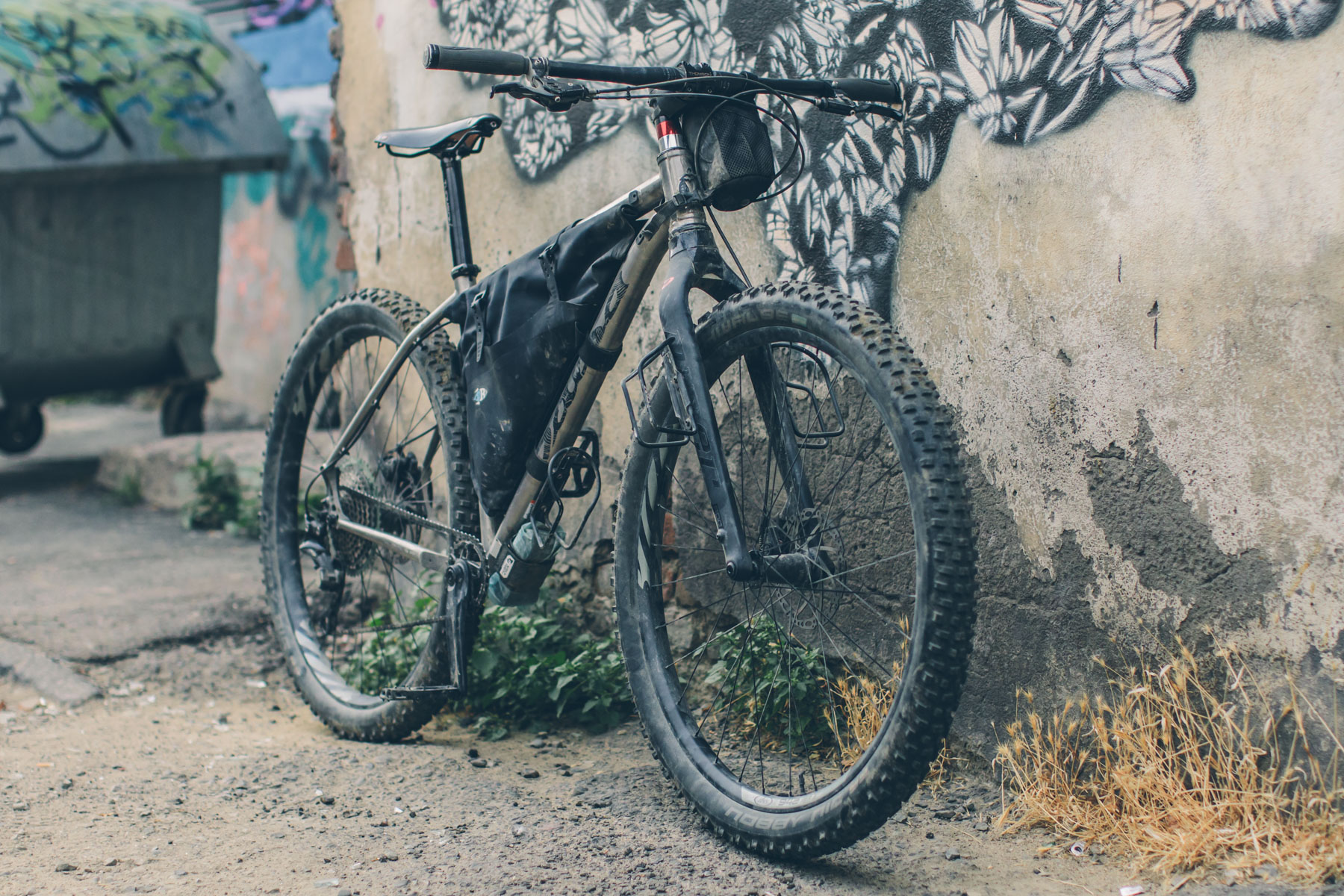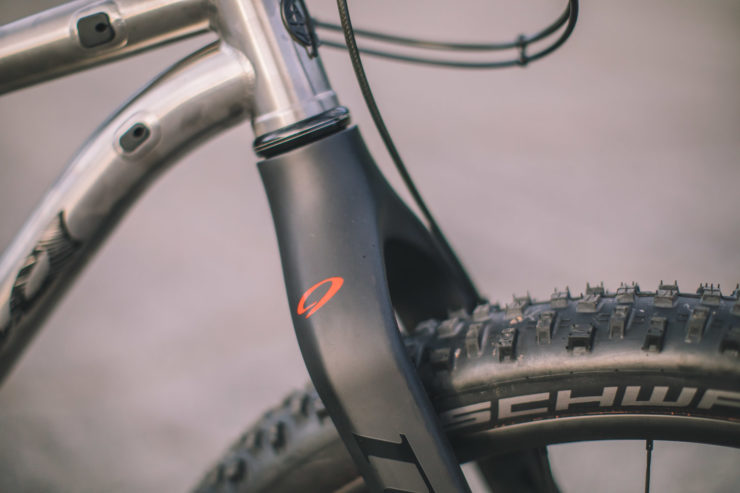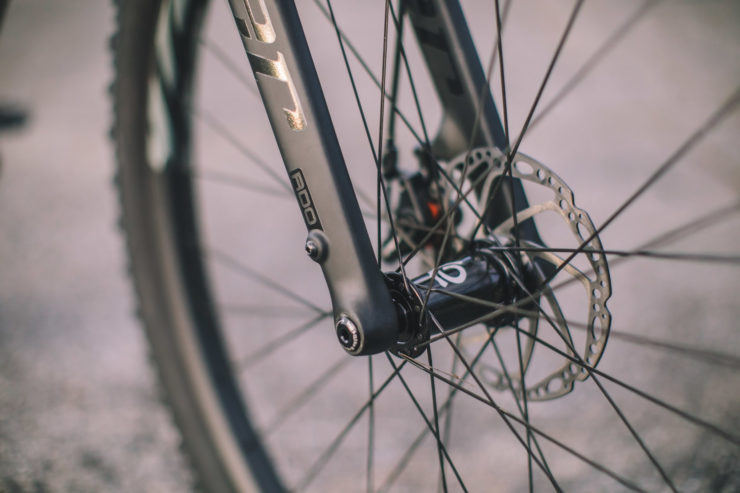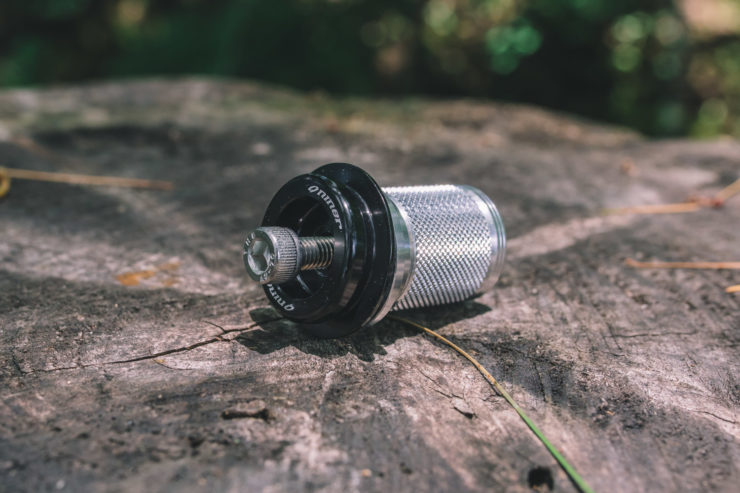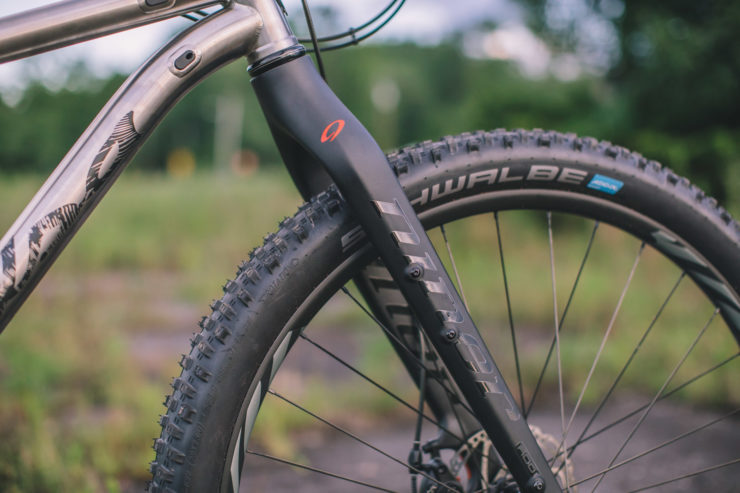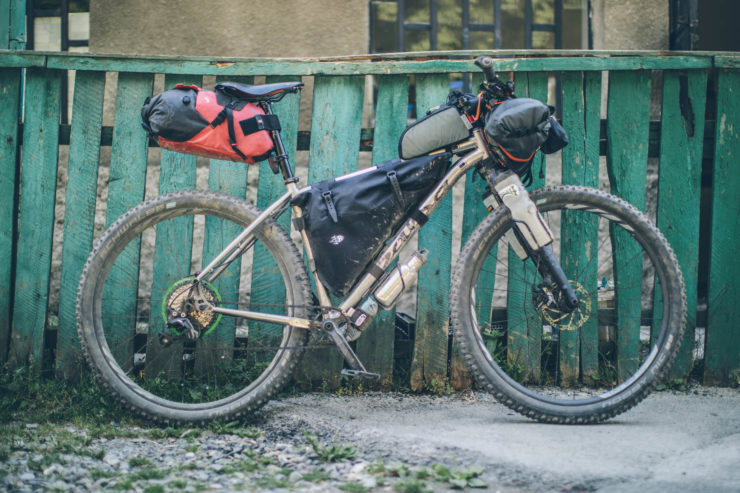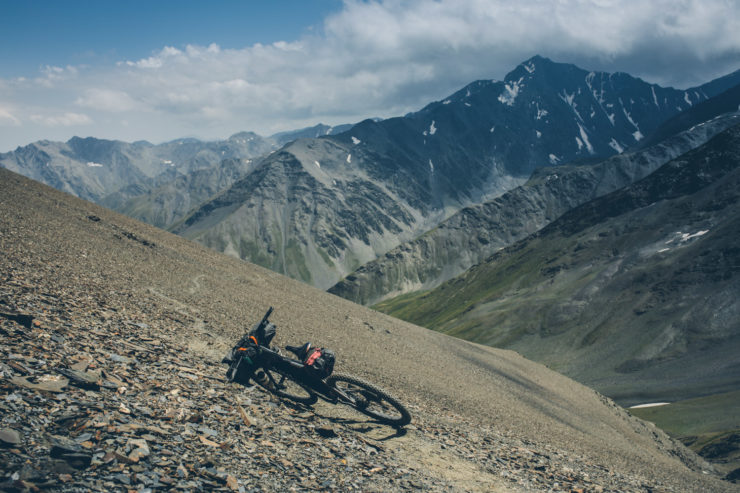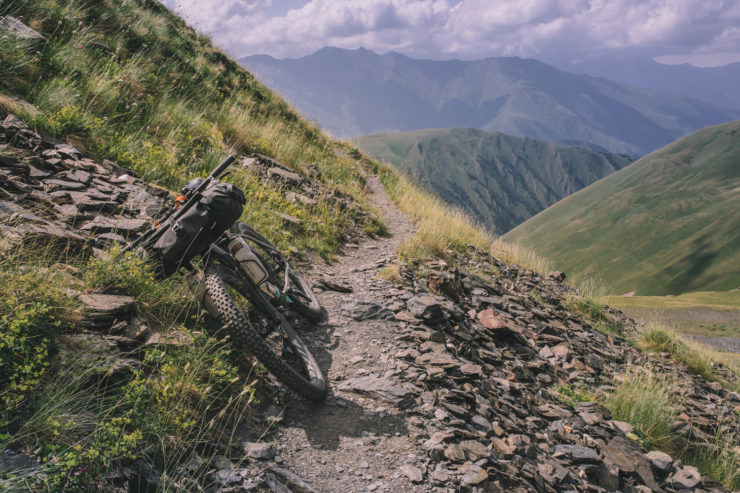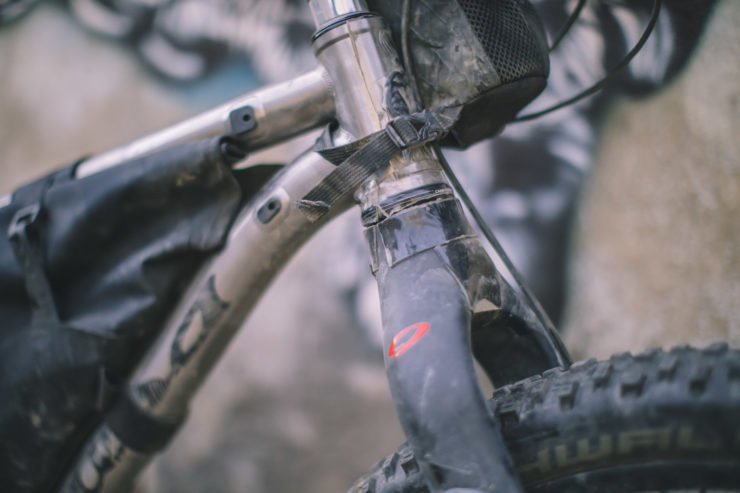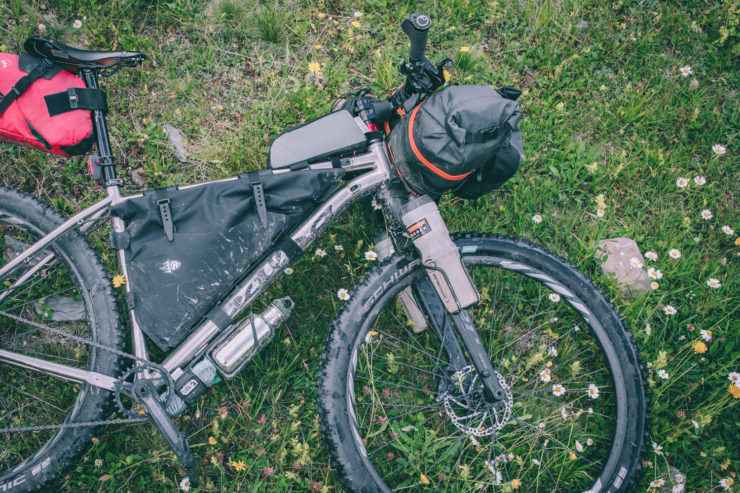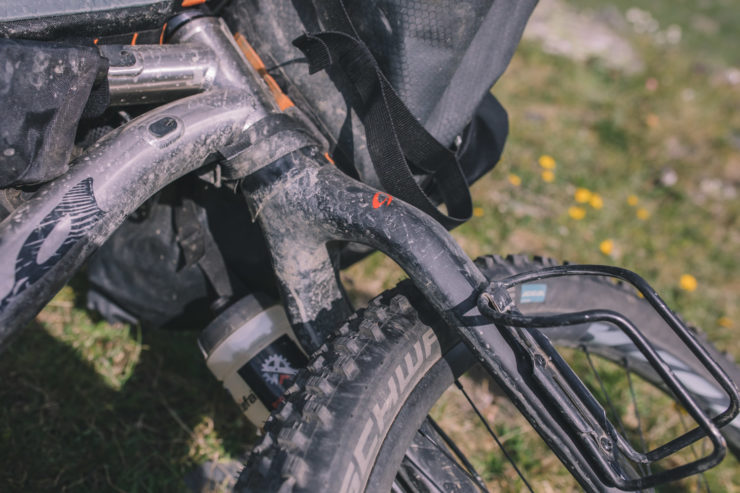Niner Carbon MTB Fork Review (RDO BOOST): The History of Rigid
Interested in turning your hardtail into an efficient, Tour Divide-ready bikepacking rig? Or just keen to have a pure rigid experience on the trail? To accomplish either of those pursuits with the most advanced means possible, the Niner RDO BOOST MTB Fork is one of the few trusted, ultralight, carbon forks on the market that’s directly interchangeable with modern thru-axle suspension forks — plus it fits 29+ tires and has bottle mounts. We built up a Timberjack Ti with one and took it into the Caucasus …
Before I dig in, some folks might immediately ask, “What place does a fancy rigid fork have in the modern world of bleeding-edge and fully tuneable suspension?” To that I’ll let history provide some insight. It wasn’t until the late ‘90s when decent mountain bikes required some form of suspension to be considered a reputable tool for the trail. Then came rear-suspension, which of course wasn’t nearly as efficient, nor as pleasant, as current iterations. Soon thereafter, any mountain bike that didn’t feature at least one springy component was deemed an outdated apparatus. And anyone riding such a rig was a masochist. Then came the 29er, whose big, bump-squelching wagon wheels reminded folks that rear suspension wasn’t a “must”. With a little skill and panache, and a bit of love for suffering, a hardtail or fully rigid bike could be ridden just about anywhere.
Nowadays, tubeless tires accommodate lower tire pressure, and meatier plus-sized tires provide yet another layer of cushion, so anything is possible on a rigid bike with the right mindset. A fully rigid setup may not appeal to everyone, but it certainly has its merits in weight savings, pedaling efficiency, and freedom from maintenance — three things important to most racers, as well as some folks who tour longer bikepacking routes… and, to those of us who appreciate the simplicity of a rigid trail bike.

So who spends $500+ on a rigid fork? I’ll defer that question to folks who’ve embraced this monocoque carbon fork since its release back in 2008-2009. Rationale would likely include words such as accuracy, responsiveness, weight savings, and the chatter-absorbing characteristics of carbon. All of which interest folks in the endurance racing world. And, all of which are immediately evident when riding this fork, as I can now attest. On the outset it is no doubt a bit of a conundrum that such a fork can compete – both financially and technologically – with a suspension fork of a decent caliber, and find success in the market. But having spent a fair amount of time on rigid bikes with carbon forks I can see the draw, and what keeps a seemingly outdated component interesting, and to some, exciting.
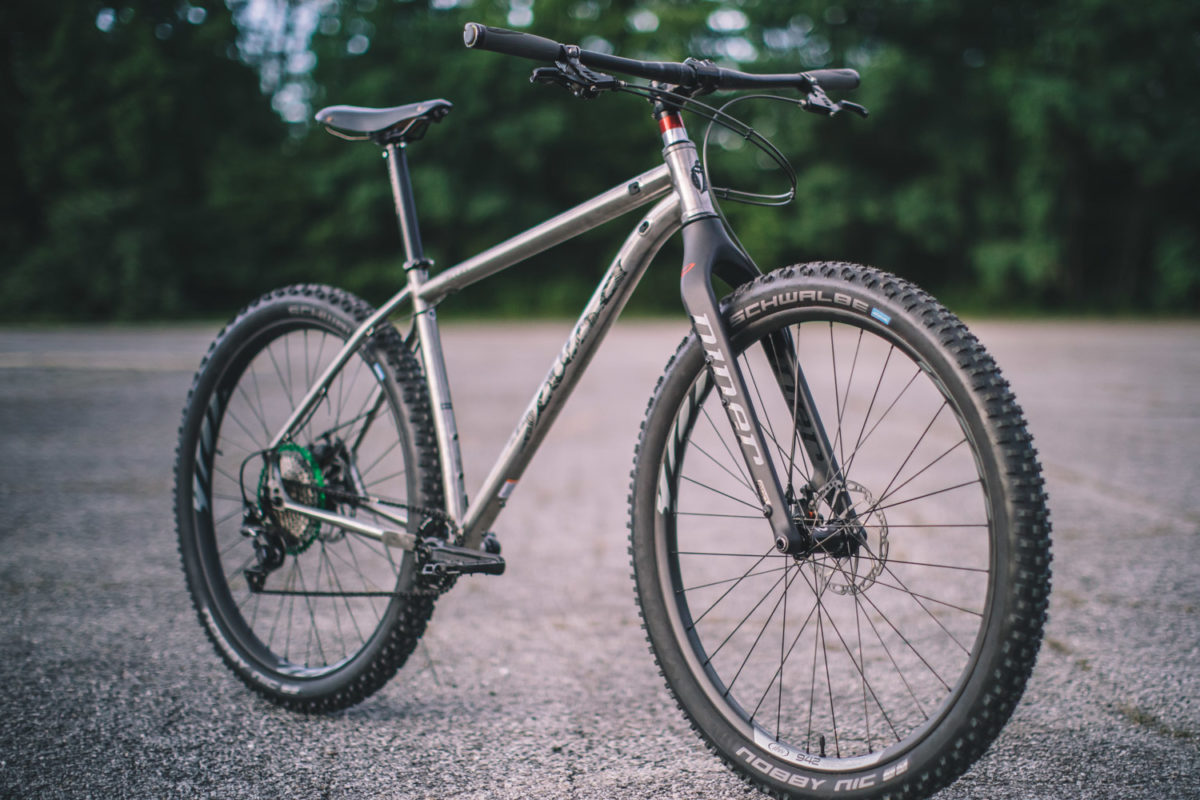
Niner RDO BOOST MTB Fork, Past and Present
Introduced in 2008-09, the original Niner carbon RDO fork practically created its own category. They’ve since upgraded it a couple of times. All the while it’s been a mainstay amongst singlespeeders, endurance racers, and sufferfesters alike. Mostly it’s used on hardtail frames with the intention of going fully rigid. Back in the heyday of 29ers, the RDO fork could often be spotted on classics such as the Karate Monkey, Kona Unit, Niner Air 9, and Salsa El Mariachi.
The latest revamp was released in the first quarter of 2017. The popular platform was modernized with the addition of a 110x15mm bolt-through BOOST Maxle and clearance for 29×3.0″ tires, as well as two popular provisions found on today’s utility forks, mid-blade bottle mounts and low rack mounts. It has all the new standards, which makes it quite advanced considering its old school context. The latest version also has a tapered steerer, which by its very nature — a monocoque construction paired with the stout bolt-in Maxle — ties the bike’s steering about as directly to the trail as physically possible. Theoretically, the result of all this new tech results in a very solid fork and a stiff wheel yielding the most advanced rigid front-end available.

Matching a rigid fork, by the numbers
Most of those aforementioned 29ers were designed to accommodate a 100mm suspension fork. The Niner RDO fork was originally engineered with that in mind. When looking at those specs the two most important numbers are the axle to crown (AC) height and the rake (AKA fork offset). The AC has a direct impact on several important factors in a bike’s geometry, namely the head angle, seat tube angle, and bottom bracket height. When converting a suspension bike to rigid, you’re ideally looking for an axle-to-crown that mimics the ride height — with the suspension sagged — to maintain the handling of the bike as it was originally conceived. The AC height of the RDO is 490mm. A 100mm travel 29er fork typically has about a 510-520mm AC, give or take a few millimeters, so with 20% sag (20mm), a 490mm rigid fork would be an excellent match. The Surly Krampus, designed for a 100mm travel fork, is a case in point. The specced steel fork on the Surly Krampus has an AC height of 490mm, and a similar offset of 47mm.
So how about 27.5+ bikes? Most trail bikes in this category, a breed of bike cherished by many bikepackers, are specced with a 120mm travel fork. The Jamis Dragonslayer, Marin’s Pine Mountain, Surly Karate Monkey, and Kona’s Big Honzo, are a few that spring to mind. Suspension forks for 27.5+ with 120mm of travel often have a similar AC height and offset. The 27.5 Fox 34, for example, has an AC height of 525mm with a rake of 51mm. At a 20% sag this would make the intended AC height right about 500mm. Theoretically, when swapped with the Niner RDO fork, it would drop the front end by about a centimeter and steepen the bike a hair. It would also drop the BB height ever so slightly when compared to the bike’s claimed geometry. But given the fact that there is no additional travel on a rigid bike, this should be just fine in most situations. In the case of the Timberjack Ti, a bike made to work with either 27.5+ or 29er hoops, that’s generally specced with a 120mm fork, the 10mm difference was not at all an issue. The slight shift in geometry steepened the seat tube a touch while keeping the front end slack enough to stay trail savvy. In my opinion, that shift actually improved the geometry. And with ‘wide-trail’ 29×2.6” tires, the bottom bracket was plenty high to avoid pedal strikes. In fact, unless you are working with 27.5+/120mm travel bike that already has an unusually low bottom bracket, the Niner Carbon RDO MTB fork should be a pretty good fit.
For reference, here are the AC heights for several common forks. Note that these measurements are often consistent across multiple models of the same manufacturer, but check to be sure.
Rockshox Pike
120mm (27.5): 512mm AC
100mm (29+): 523mm AC
110mm (29+): 533mm AC
Manitou Machete
120mm (27.5): 516mm AC
100mm (29): 510mm AC
120mm (29): 530mm AC
Fox 34
100mm (29): 517mm AC
120mm (29): 527mm AC
100mm (27.5+): 515mm AC
120mm (27.5+): 525mm AC
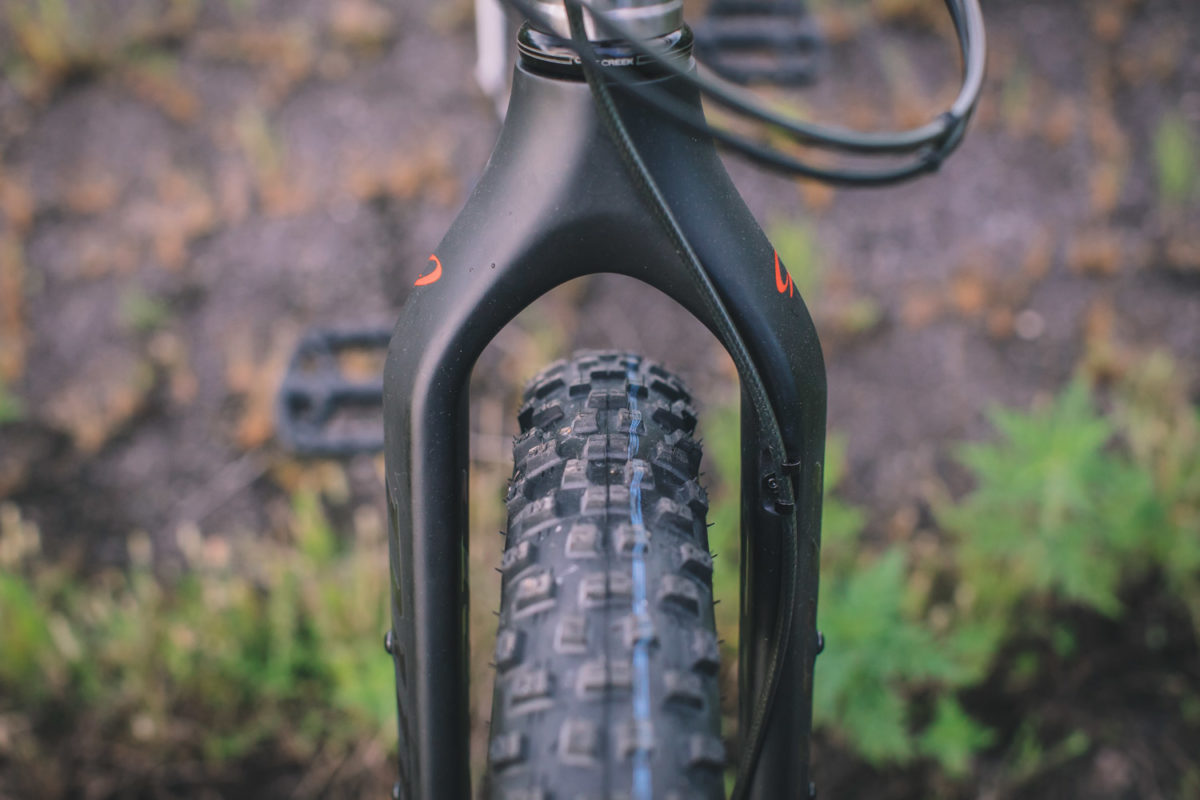
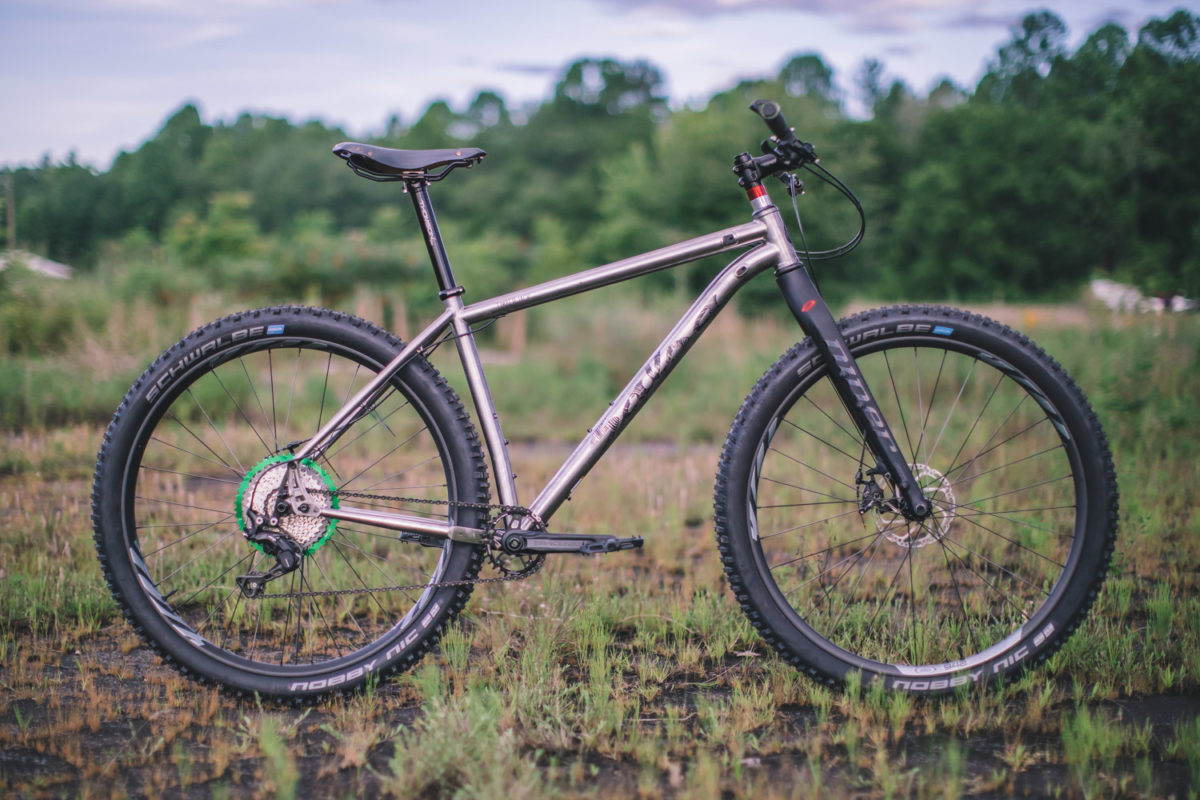
Contrary to this article’s intro, the bike shown here is not destined for the Tour Divide. My intention was to build a bike for fast bikepacking and quick route scouting. For this purpose, the Timberjack Ti frame with a carbon RDO fork was the perfect pairing to keep it light, nimble, and efficient. As it happens, the TJ was destined for overseas adventure straight out of the gate. However, our trip to the Republic of Georgia’s Caucasus Mountains was cut short, so this is by no means a long term review. Instead, this should be considered 300 mile ride review as well as a report on my line of thinking as to why I chose this fork for such a rig.
As mentioned, the fork had to meet a few requirements, including a tapered steerer and BOOST 110 thru-axle. And of course, room for 29+ tires was a must. I am currently running 29×2.6″ Schwalbe Nobby Nics on 35mm inner width rims, but I wanted to keep the option of running 2.8s as well. The Niner RDO still has loads of space and can comfortably fit 29×3.0″ tires, without a squeeze. Having plenty of air between the tire and a fork legs is pretty important; I’ve seen the inside of a carbon fork get chewed up from a tire caked with mud and gravel. That fact also reinforces the value of BOOST spacing and a thru axle. 100mm QR 29+ wheels are not the stiffest, by any means. They have plenty of flex. So a muddy tire flexed a few millimeters to one side or the other could be the source of abrasion against the fork’s interior…
Touring With Carbon
Some folks might immediately dismiss the idea of long distance bikepacking on anything made of carbon, but I am completely confident in carbon forks, many of which are equally as robust as steel forks — and perhaps even stronger. As a case study, Virginia has several thousand dirt-touring and bikepacking miles on her Salsa Firestarter carbon fork at this point. It’s been pogoed over all kinds of tracks in Africa, beaten up in boxes on flights, strapped to roof racks, and ridden over some ridiculously rugged terrain. Still, I didn’t give a second thought to her bringing it along on this trip as well, battle scars and all.
Niner’s carbon forks have been around a relatively long time. The carbon RDO has been tested over the years and beat to no end by singlespeeders, endurance mountain bikers, and rigid aficionados. It’s certainly been a common sighting around rocky Pisgah and the root-strewn East coast over the years. If second-hand assurances aren’t enough to convince you, Niner is so confident in the strength of their product that the Boost RDO Fork is backed by a 5-year warranty. In addition, the upgraded tapered steerer would theoretically make it even stronger than this one:
There is one area for concern with long distance bikepacking on carbon frames and forks. Straps and bags can inflict some serious damage to carbon while rubbing against it day after day for miles on end. No other place is more vulnerable to this kind of damage than the base of the headtube and the fork crown. With the strap at the base of the handlebar roll or harness — as well as the bag itself — constantly moving against this area, deep gouges can form over time. The same can be said for steel. I’ve had straps rub down to the bare metal and then some. But, carbon is more sensitive to abrasion, and I’ve seen gouges that almost became holes.Fortunately, it’s easy to protect against this. I use a product called Shelter by Cantitoe Road. It’s like a thick gel tape that, when applied neatly (not as shown0, is almost invisible. There are other brands too, such as Everclear, by Miles Wide. This thin layer provides complete protection against straps and other wear. In addition, there are are handlebar harnesses such as Salsa’s Anything Cradle and the Specialized Bura Bura, which clamp to the bars, eliminating such straps and keeping the load away from the headtube and fork crown.
Ultimately, I have very few gripes with the Niner Carbon RDO fork. It rides well, has all the bells and whistles I want and need, and I expect it to last a long while. However, it isn’t without fault. I would really like to see Niner add a third bottle mount on each blade, so they can accommodate triple mount cages such as the King Manything Cage. Alternatively, Niner could space move the current pair of mounts down so the bottom rack mount doubles as a triple cage mount. With the pair as is, it could be argued that the current mounts are placed a hair too high on the fork legs when used with larger water bottles and a handlebar roll. While using full one liter bottles, such as my prefered Zefal Magnum, the location of the mounts makes the bottles sit a little too close to the handlebar roll. Although it took a little more effort to remove and replace these long bottles, this issue wasn’t a deal breaker, and the spacing is just fine with standard size bidons.
Pros
- One of (of not the only) carbon MTB fork with BOOST hub spacing and bottle mounts.
- Fits 29×3.0” tires.
- Longstanding history which has proved the RDO fork’s durability.
- Bottle and rack mounts.
- Simple, clean design.
Cons
- No third bottle boss for Anything or Manything cages, or bags like the new Oveja Negra Bootlegger.
- No internal dynamo wiring.
- Model Tested Niner BOOST RDO MTB Fork
- Axle 110x15mm bolt-in Maxle
- Axle to crown 490mm
- Rake 51mm
- Weight 585 grams (20.6 oz)
- Price $550
- Manufacturer’s Details Link
If you can’t support a local bike shop, find it at Tree Fort Bikes
WRAP UP
When I was building this bike last summer, there weren’t many carbon forks available that fit of my requirements, and there still aren’t. There are even fewer that are interchangeable with the latest BOOST 110mm thru-axle suspension forks. The ability to swap a suspension fork and not be required to have another wheel was in my best interest. This might also be the case for some bikepackers whose trail hardtail doubles as their bikepacking race rig.
In addition, the Niner RDO BOOST MTB fork is about as versatile as they come. It fits up to 29×3.0” tires, has plenty of mounts, and works well with a 27.5+/29 trail hardtail.
Ultimately I chose the Niner RDO BOOST MTB fork because it was the only carbon fork available that ticked all the boxes. But it also has a long history of durability, which was crucial when considering a component that would be taken into the middle of the Caucasus mountains and beyond…
Please keep the conversation civil, constructive, and inclusive, or your comment will be removed.






